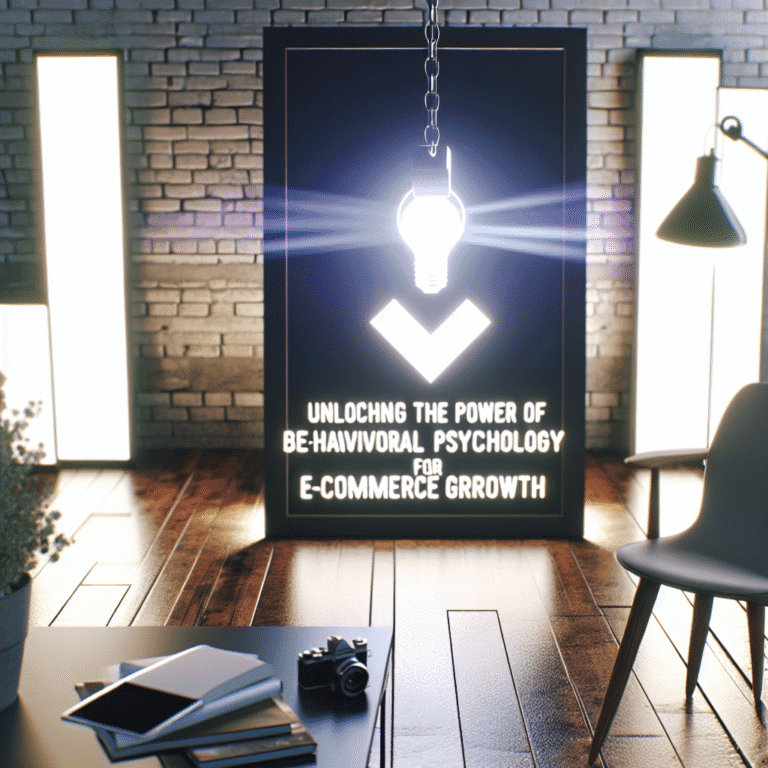Why Good Marketing Needs a Pinch of Psychology
Ecommerce and psychology, eh? Who would've thought these two would ever share a cuppa? Yet, here we are. You’d think it’s all about data and graphs, wouldn’t you? But numbers are just numbers unless you know why they matter. Never forget: people aren't robots. They don't run on stats alone, and sometimes, a clever marketing strategy needs that magic touch of understanding how people tick.
So, what's the trick here? It’s simple. Understand what makes shoppers hesitate, why high hopes skip the checkout line, and how to stop mistaking scratches for dents. Like when your page frightens browsers away. Could it be bad design? Or just dreaded decision paralysis? Put on your thinking cap, and let's explore some quirky truths of why people buy stuff.
Keep It Easy and Breezy
Imagine shopping that feels like a Saturday stroll. Wouldn't that be lovely? That’s why sites like Apple go minimalistic. No clutter, just elegance.
- User-friendly layouts
- Clear calls to action
- Easier checkout steps (quick note: the Baymard Institute found this can improve sales by up to 35%)
Confused folk rarely become loyal folk. Keep shopping as light as a feather and watch conversion rates float up.
The Fear of Missing Out
Oh, the fear of missing out (FOMO) — it gets to the best of us. A little urgency now and then is just what you need to spur folks into action.
- Surprise! A limited-time discount with a ticking clock
- Items in short supply? Let them know
- Send a friendly reminder about their cart and their disappearing savings
FOMO nudges people to move, but balance is key. Overdo it and your urgency feels more like a panic button.
Trust the Crowd
When in doubt, follow the crowd, they say. That’s why a little social proof goes a long way.
- Flaunt those star ratings by the “Add to Cart” button
- Show off bestsellers or top picks
- Share images from happy customers
Something as simple as "1,578 people bought this last week" speaks volumes. Trust that the crowd knows best.
Give Now, Receive Later
There’s something about giving first, isn't there? It makes people want to give back. Offering value upfront builds the bridge to bigger sales.
- Offer a discount for an email
- Drop in a free guide or quiz
- Offer loyalty points before they even buy
Generosity makes people feel all warm and fuzzy, paving the way for loyal customers.
Small Steps to Big Surprises
Tiny actions lead to great things, my friends. Any interaction on the site can start moulding their identity, making them stick to it like glue.
- Allow product saving sans login
- Provide a progress bar during checkout
- Suggest products based on their choices
It's the little nudges that keep them on the website and help boost sales without shouting the sale pitch.
Make Your Price the Anchor
Ever notice how that expensive wine makes the second-cheapest bottle look reasonable? That’s anchoring, my friend.
- Show original with discounted prices
- Kick it off with pricier listings
- Pick bundles that shift perceptions
These tricks help reframe the deal, making a once-costly item appear to be a bargain.
Scarcity Attracts
Scarcity! It wins attention as nothing else does. People desire what they think is rare.
- Show real-time stock levels
- Put up countdown banners for exclusive offers
- Use “Limited Edition” like a magic spell
Honesty is everything. Fake scarcity breaks trust. If it’s rare, make sure it’s real.
Let Them 'Build'
People cherish things they help create. Look at that IKEA furniture pride!
- Let customisation reign, be it colours or bundles
- Offer build-your-own kits
- Encourage style engagement before checkout
Turning passive buyers into active participants raises the stakes, and the purchase value.
Make it Personal
People love to see something as "theirs." That’s the brilliance behind free trials.
- Use personal language like "Your Cart"
- Offer try-before-you-buy options
- Promise free returns
Once it feels like it’s already theirs, they’re less likely to let it go.
Defaults Matter
When left to defaults, people often stick with them. Smart choices silently guide users in the right direction.
- Use best-selling options as defaults
- Employ smart filters to showcase value
- Simplify checkout with autofill
Think of it as invisible guidance, nudging customers subtly yet effectively.
Connecting the Dots
Data’s there to tell what happened, but psychology explains why. Blend them right and watch sales soar. So next time numbers waver, consider:
- Was it simpler or fussier?
- Did it boost confidence or pile on the confusion?
- Did any unseen mental trigger play out?
Psychology’s not just for brand presentations. It's the puppet master behind every successful ecommerce site. Tweak those KPIs to fit the mind of the shopper and watch your results flourish. Now, how about taking a break from those dashboards and diving into the people behind the clicks?





